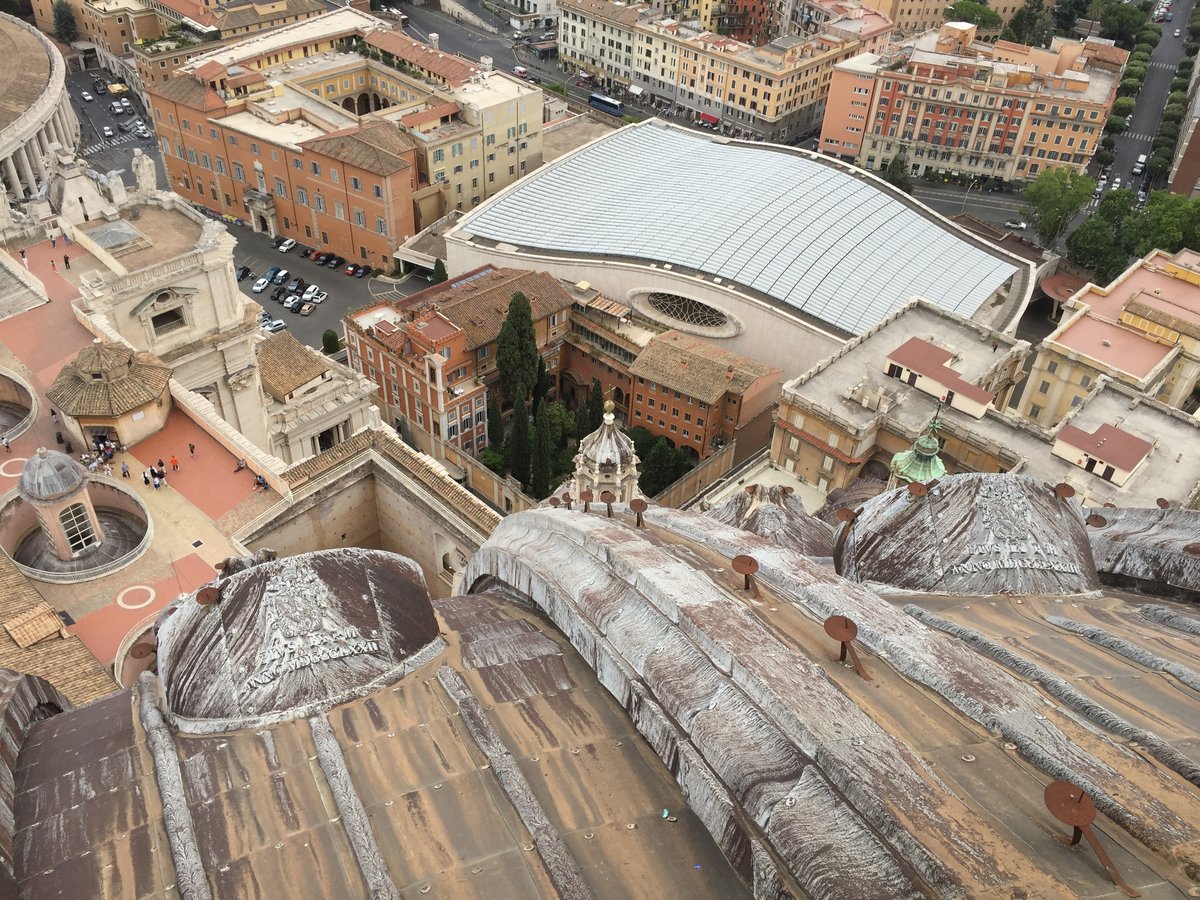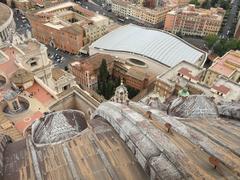
Campo Santo Teutonico: Visiting Hours, Tickets, and Historical Significance in Rome
Date: 14/06/2025
Introduction
Nestled beside St. Peter’s Basilica in Vatican City, Campo Santo Teutonico is a remarkable and exclusive historical site, intertwining Germanic heritage with the spiritual heart of Catholicism. Established in the early medieval period and formally founded by Charlemagne in the late 8th century, this sacred cemetery serves as both a burial ground and a hub for German-speaking pilgrims, clergy, and scholars visiting Rome. Its origins are rooted in a site once part of the Circus of Nero, where early Christian martyrs—including St. Peter—are believed to have perished, lending the area profound religious significance (Wikipedia, Encyclopedia.com).
Over the centuries, Campo Santo Teutonico has transformed through the medieval and Renaissance periods into a spiritual sanctuary enriched by artistic treasures, such as the church of Santa Maria della Pietà and the tombs of Swiss Guards who lost their lives during the 1527 Sack of Rome. The site’s academic dimension was established with the founding of the Pontifical Teutonic College and the Görres Institute, nurturing theological and archaeological scholarship that continues to thrive (Omnesmag, Goerres-Gesellschaft).
Today, visitors are welcomed into a serene, walled enclave offering a peaceful retreat from the bustle of Vatican City, with insights into centuries of Germanic Catholic tradition and enduring ties to the Holy See. Though access is controlled and visiting hours are limited, Campo Santo Teutonico provides a unique opportunity to explore a lesser-known Vatican site rich in history, art, and spiritual depth. This guide covers essential visiting information, hours, accessibility, ticketing, nearby attractions, cultural and academic highlights—ensuring an enriching experience for history enthusiasts, pilgrims, and travelers alike (Turismo Roma, katholisch.de).
Table of Contents
- Historical Overview
- Religious and Cultural Significance
- Architectural and Artistic Heritage
- Academic and Scholarly Importance
- Visiting Information
- Visitor Experience and Etiquette
- Symbolic and Diplomatic Dimensions
- Notable Burials and Patronage
- Nearby Attractions and Travel Tips
- Health and Safety Considerations
- FAQs
- Conclusion and Call to Action
- Visuals and Media
- External and Internal Links
- Sources
Historical Overview
Origins and Early Development
Campo Santo Teutonico occupies a site rich in history, once part of the Circus of Nero—where early Christians, including St. Peter, were martyred (Wikipedia). Legend claims that Empress St. Helena brought soil from Mount Calvary in Jerusalem and scattered it here, inspiring the name “Campo Santo” or “Holy Field” (Encyclopedia.com).
Carolingian Foundation
In 799, Pope Leo III granted the land to Charlemagne, who established the “Schola Francorum”—a complex including a church, hospice for German pilgrims, and a cemetery (Omnesmag). This served as a focal point for German-speaking Christians visiting Rome and reinforced the site’s deep historical connection to the Holy Roman Empire (Wikipedia).
Medieval and Renaissance Transformations
By the 15th century, the present church, Santa Maria della Pietà, was consecrated, and the All Souls Confraternity was established (Encyclopedia.com). The church houses significant artworks and the tombs of Swiss Guards who died defending Pope Clement VII during the 1527 Sack of Rome. The cemetery continued its role as a burial ground for German-speaking Catholics.
Modernization and Academic Expansion
In the 19th century, the site evolved from a pilgrim hospice to an academic center for Christian archaeology. Anton de Waal founded the College of Priests in 1876, and the Görres Institute was established in 1888 (Omnesmag). The museum and library today house extensive Christian antiquities and scholarly resources (Goerres-Gesellschaft).
20th Century and Extraterritorial Status
During WWII, Campo Santo Teutonico provided refuge and played a key role in Vatican diplomacy, sheltering those fleeing persecution (ewtnvatican.com). The Lateran Treaty of 1929 granted the site extraterritorial status under the Holy See, allowing it to operate independently from Italy (Wikipedia).
Religious and Cultural Significance
Campo Santo Teutonico remains a privileged burial ground for German-speaking Catholics—priests, diplomats, and scholars—symbolizing the enduring relationship between the Germanic world and the Papacy. Its proximity to St. Peter’s Basilica amplifies its spiritual importance, and the tradition of pilgrimage and burial here reflects centuries of close ties between the German-speaking regions and Rome (katholisch.de).
The church, dedicated to Our Lady of Sorrows, serves as a focal point for liturgical celebrations, religious processions, and community gatherings, maintaining the living traditions of German-speaking Catholics in Rome.
Architectural and Artistic Heritage
The cemetery is a tranquil, walled garden with gravestones and monuments reflecting artistic and religious sentiments from multiple eras. Many tombstones are inscribed in German or Latin, featuring intricate carvings and heraldic symbols. The church, rebuilt in the 16th century, showcases devotional artworks, including stained glass and sculptures. The cloister, with arcaded walkways and lush greenery, is often cited as one of Rome’s most peaceful spots (katholisch.de).
Academic and Scholarly Importance
Campo Santo Teutonico houses the Pontifical Teutonic College (Collegio Teutonico), which provides accommodation and resources for German-speaking priests and scholars. The adjacent Görres Institute is a leading center for historical and theological research, contributing to the global understanding of Catholicism, the Papacy, and Germanic cultural heritage (Goerres-Gesellschaft).
Visiting Information
Visiting Hours and Tickets
- Typical hours: Monday to Friday, 9:00 AM to 12:00 PM and 2:00 PM to 5:00 PM. Some sources note opening on Sunday mornings (7:00 AM to 12:00 PM), while others cite closure on Wednesdays and August, so visitors should always confirm before planning a visit (Turismo Roma, tourist-in-rom.com).
- Entry: Free of charge; donations are welcome and appreciated.
- Access: Entry is restricted and controlled by the Swiss Guard. Visitors must request access at the Guard post (often at Piazza del Sant’Uffizio or the left side of Bernini’s colonnade). Prior permission is recommended, and access may be prioritized for German-speaking Catholics, scholars, and those with special appointments.
How to Get There
Campo Santo Teutonico is adjacent to the Vatican walls and St. Peter’s Basilica. The entrance is near Via della Sagrestia 17. It is easily reached on foot from St. Peter’s Square or via public transport to the Vatican area.
Accessibility
The site offers reasonable accessibility, with ramps and pathways suitable for wheelchair users in many areas. Those with specific mobility needs should contact the management in advance to arrange accommodations.
Guided Tours and Special Events
Guided tours are sometimes available for groups with cultural or academic interests and can be arranged by prior appointment through the Archconfraternity or the Pontifical Teutonic College (Turismo Roma). Special religious and cultural events—such as All Souls’ Day and major Catholic feasts—offer unique opportunities to experience the living traditions of the site.
Photography and Visitor Guidelines
Photography is generally permitted but should be discreet, especially during services or private ceremonies. Flash and tripods are prohibited. Modest dress is required as per Vatican standards (shoulders and knees covered).
Visitor Experience and Etiquette
Visitors to Campo Santo Teutonico frequently remark on its unique tranquility—a stark contrast to the bustling crowds of St. Peter’s Square. The quiet garden, evocative tombstones, and serene cloister offer a space for reflection and contemplation. Silence and respectful conduct are expected, and group visits should be mindful of the sacred and private nature of the site.
Symbolic and Diplomatic Dimensions
Campo Santo Teutonico symbolizes the enduring relationship between the Holy See and German-speaking Catholics. It has hosted visits by German bishops, politicians, and dignitaries, and serves as a venue for ecumenical dialogue and cultural exchange.
Notable Burials and Patronage
The cemetery is reserved for members of the Archconfraternity, German colleges, and religious houses in Rome. Notable burials include Anton de Waal and Swiss Guards from 1527. Over centuries, it has received artistic patronage from European royalty and popes, including stained glass from Franz Joseph of Austria and a bronze door from German President Theodor Heuss (Encyclopedia.com).
Nearby Attractions and Travel Tips
After visiting Campo Santo Teutonico, travelers can easily explore the Vatican Museums, St. Peter’s Basilica, the Vatican Gardens, Castel Sant’Angelo, and the Borgo district. Early morning visits are recommended for a more peaceful experience.
Health and Safety Considerations
During summer months, mosquito activity in the Vatican Gardens and around Campo Santo Teutonico can be high (mosquito-forecast.org). Visitors are advised to use insect repellent and wear long sleeves during dawn and dusk.
Frequently Asked Questions (FAQ)
Q: What are the visiting hours for Campo Santo Teutonico?
A: Typically Monday to Friday, 9:00 AM–12:00 PM and 2:00 PM–5:00 PM, or Sunday mornings. Hours may vary; always verify before visiting.
Q: Is there an entrance fee or do I need a ticket?
A: Admission is free; prior permission or appointment is often required.
Q: Are guided tours available?
A: Occasionally, for groups with cultural or academic interests—by appointment.
Q: How do I access Campo Santo Teutonico?
A: Request entry at the Swiss Guard post; some restrictions apply.
Q: Is the site wheelchair accessible?
A: Many areas are accessible; contact the management in advance for specific needs.
Q: Is photography allowed?
A: Discreet photography is permitted, but avoid taking photos during services or private moments.
Conclusion and Call to Action
Campo Santo Teutonico offers an extraordinary combination of history, spirituality, and cultural identity in the heart of Rome. Its tranquil gardens, artistic monuments, and centuries-old traditions make it an essential stop for those seeking a deeper connection with the Vatican’s multicultural heritage. Plan your visit in advance, respect the sacred nature of the site, and consider attending a guided tour or cultural event for an even richer experience.
Download the Audiala app for up-to-date visiting hours and guided tours, and follow our social media channels for the latest updates and insider tips on Rome’s hidden gems.
Visuals and Media
To enhance your visit, consult high-quality images of the Campo Santo Teutonico entrance, church interior, and gardens. Optimized alt tags such as “Campo Santo Teutonico cemetery entrance” or “Santa Maria della Pietà interior” improve accessibility and SEO. Maps and virtual tours are available through official Vatican and Pontifical Teutonic College resources.
External and Internal Links
- Official Holy See Website
- Campo Santo Teutonico Official Page
- Goerres Scientific Society
- Rome Tourism Official Site
- [Guide to St. Peter’s Basilica]
- [Vatican Museums Visitor Information]
- [Top Historical Sites in Rome]
Sources and Official Links for Further Information
- Campo Santo Teutonico: Visiting Hours, Tickets, and History of Rome’s German Cemetery, 2025, Omnesmag
- Exploring Campo Santo Teutonico: Visiting Hours, Tickets, and Rome Historical Sites Guide, 2025, katholisch.de
- Campo Santo Teutonico Visiting Hours, Tickets, and Historical Guide to the Vatican’s German Cemetery, 2025, tourist-in-rom.com
- Campo Santo Teutonico Visiting Hours, Tickets, and Cultural Insights in Rome, 2025, Turismo Roma
- Campo Santo Teutonico, Wikipedia
- Campo Santo Teutonico, Encyclopedia.com
- Goerres Scientific Society, 2025
- EWTN Vatican, 2025, 80 Years After WWII: Reexamining the Catholic Church’s Role
- Mosquito Forecast Vatican Gardens, 2025


















































































































































































































































